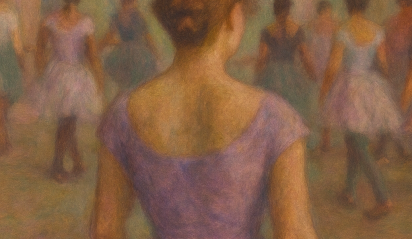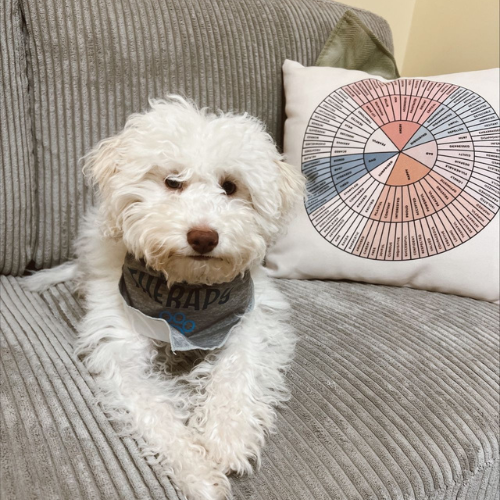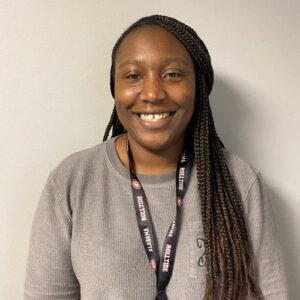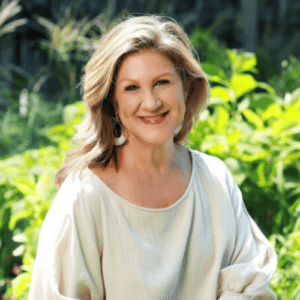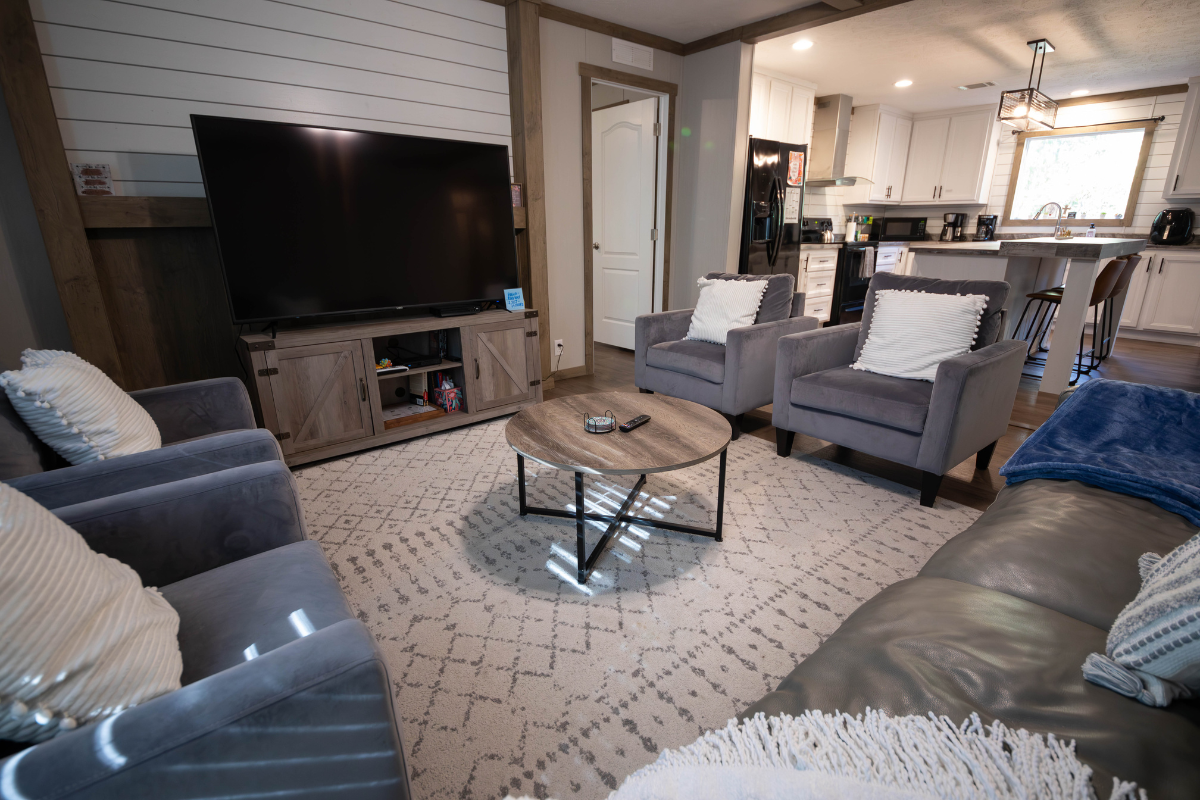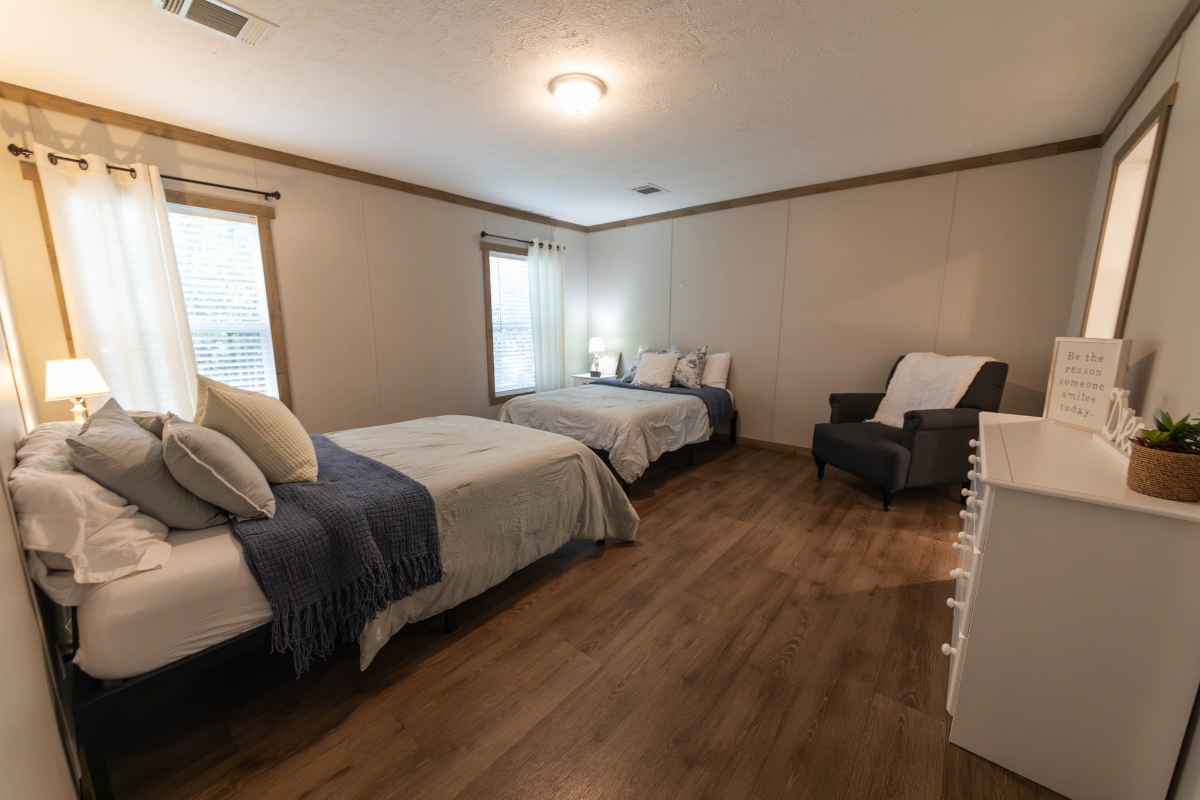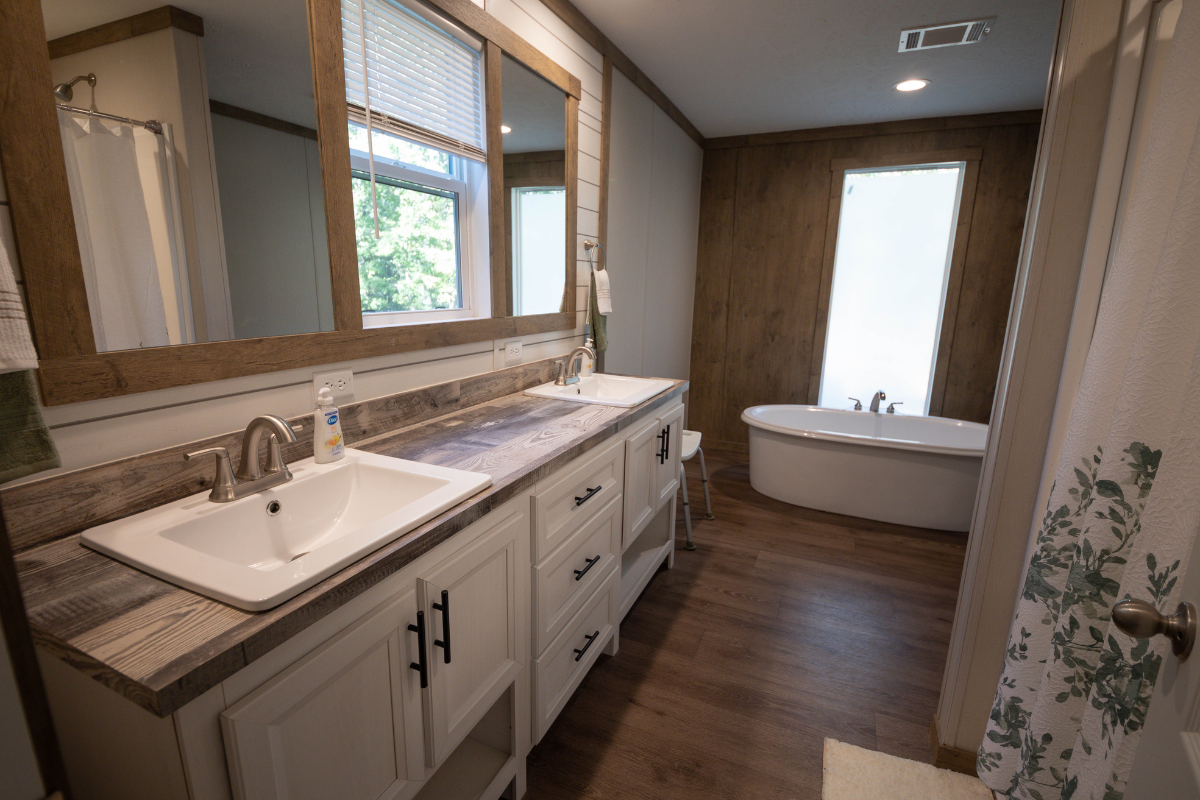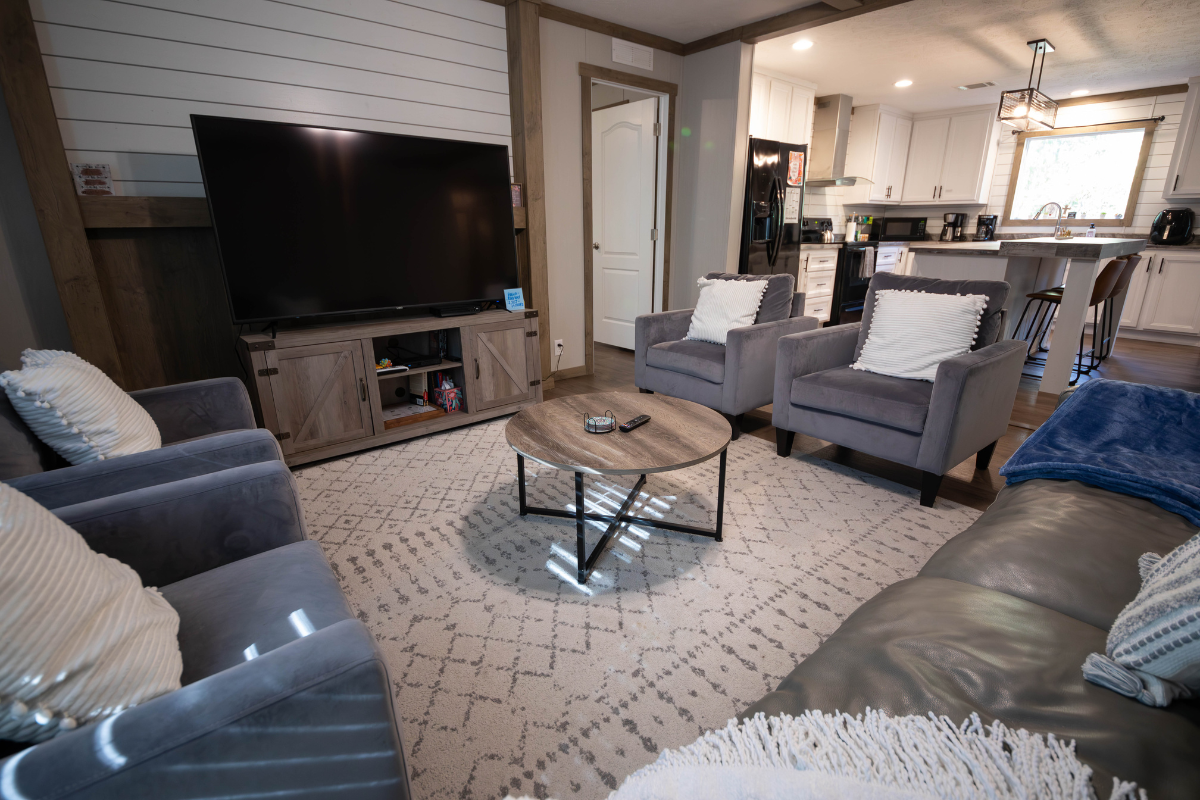In our image-obsessed culture, being thin is often treated as proof that someone has their life together. It’s read as a sign of discipline, health, and even moral worth. It’s everywhere we look — on magazine covers, in fitness ads, in influencer posts that glorify “clean eating” and “body goals.” The inescapable nature of social media has only amplified the message. With every scroll, we’re inundated with filtered images and carefully curated bodies that subtly tell us thinner is better, that happiness, confidence, and success are all waiting on the other side of a smaller body.
These messages don’t just change how we see other people. They change how we see ourselves. They teach us to measure our worth in pounds or inches or how we look in a TikTok. They teach us to believe that controlling the size of our bodies is the key to being accepted or desired. Over time, that mindset can quietly fuel shame and constant comparison to both peers and strangers. For many of us, it’s a path to disordered eating or full-blown eating disorders.
To understand why so many struggle with their bodies — and their relationship with food — it helps to look at two powerful cultural forces that feed this cycle: thin privilege and the thin ideal.
What Do “Thin Ideal” + “Thin Privilege” Really Mean?
The thin ideal is the belief that being thin equals being beautiful, healthy, and successful. It’s the idea that smaller bodies are somehow “better” — more disciplined, more desirable, more worthy. It’s been around for decades, but social media has taken it to a whole new level. Scroll through Instagram or TikTok for just a few minutes, and it’s easy to feel like everyone’s chasing the same kind of body: lean, toned, young, and perfectly polished.
These constant messages make it hard not to compare ourselves and even harder to feel good in our own skin. Research shows that being exposed to thin-ideal images again and again — especially during adolescence — can increase body dissatisfaction and the risk of disordered eating.¹ It’s not about vanity. It’s about being taught, over and over, that only certain bodies deserve praise.
Thin privilege is what happens when someone’s body naturally fits that cultural ideal. It means being able to find clothes easily, exist comfortably in public spaces, or receive medical care without feeling judged, dismissed, or told to “just lose weight.” It doesn’t mean thin people don’t struggle with body image (many do), but it does mean they’re less likely to face judgment, exclusion, or discrimination because of their size.
Thin privilege and fatphobia — the fear and stigma of larger bodies — often work together in ways we don’t even notice. When society universally rewards thinness and criticizes fatness, we internalize the message. We start believing our worth depends on how small we are. Over time, those beliefs can quietly shape how we eat, move, dress, and feel about who we are.
How Thin Privilege Shows Up in Everyday Life
Thin privilege can be easy to overlook if you benefit from it. But for those who don’t, it’s impossible to ignore. It shows up in countless small ways that, over time, send a powerful message about who belongs and who doesn’t.
Shopping for clothes. If you’re in a smaller body, chances are you can walk into most stores and find your size without much thought. For others, clothes may not fit, might cost more, or only be available online. The simple act of shopping can turn into a painful reminder that the world wasn’t built for their body.
Public spaces. Think about airplane seats, restaurant booths, waiting room chairs — even concert seating. Many of these are designed for thin bodies. People in larger bodies often have to worry about whether they’ll fit comfortably or be judged for taking up “too much space.”
Social feedback. Thin people are more likely to receive compliments like “You look great!” or “I wish I had your figure.” These comments may seem harmless, but they reinforce the idea that thinness is something to be admired or coveted while larger bodies are something to be fixed.
Healthcare. Weight bias is one of the most common and harmful forms of discrimination in medicine. Research shows that individuals in larger bodies are more likely to have their symptoms dismissed or blamed on their weight — even when their concerns are completely unrelated.2 This leads to missed diagnoses, delayed care, and real harm.
Work and opportunity. Studies have found that people in larger bodies often face bias in hiring, pay, and promotions.² They may be seen as less disciplined or less competent than their thinner peers, even when their skills and work performance prove otherwise.
How These Pressures Can Lead to Disordered Eating
Even people who appear confident can quietly struggle under the burden of comparison, shame, and the belief that they should take up less space. Over time, those pressures can grow into unhealthy behaviors and even eating disorders.
1. Taking the thin ideal to heart
When the world tells us that being thin equals being good, many people start comparing themselves to that ideal without even realizing it. Social media can make this worse; endless “fitspo” posts, edited selfies, and transformation photos create the illusion that thinness is not only achievable but necessary to be happy or perceived as successful. Studies show that repeated exposure to thin-ideal content increases body dissatisfaction and disordered eating behaviors, especially in teens and young adults.³
This is not about vanity — it’s about conditioning. When we’re constantly told that only certain bodies are beautiful, we start believing that message, even when it hurts us.
2. Mistaking restriction for "discipline"
Because diet culture celebrates weight loss, restrictive eating can seem like a healthy lifestyle choice. Cutting calories, skipping meals, or avoiding entire food groups often gets labeled as “being good” or “being in control.” But what starts as a diet can quickly turn into an obsession — one that steals joy, peace, and energy.
In professional treatment settings, it’s common to hear clients describe how their desire to “eat clean” or “get healthy” gradually took over their life. What began as a small change became a full-time pursuit of thinness. And because society often praises those behaviors, many people don’t realize how much harm they’re doing until they’re deep in the throes of an eating disorder.
3. When pain gets overlooked
Thin privilege can also make it harder for people to recognize when they’re unwell. Someone in a smaller body might be praised for losing weight, even if that loss is the result of an eating disorder. On the other hand, someone in a larger body may be encouraged to keep dieting, even when they’re restricting in dangerous ways. In both cases, weight bias delays care and can make recovery even harder.2
4. Shame + self-blame
When people feel like their bodies aren’t “good enough,” that shame can sink deep. It can turn into perfectionism, self-criticism, and constant worry about food or exercise.
The truth is, no one wakes up one day and chooses to have an eating disorder. These serious illnesses often grow out of a mix of cultural messages, personal vulnerabilities, and a longing to feel in control — especially in a world that constantly tells us we’re not enough.
Finding a Healthier Way Forward
Healing from these pressures takes time and compassion — both individually and collectively. Here are a few ways to start changing the conversation.
1. Challenge the thin ideal
Therapy can help people identify where their beliefs about body size and worth came from and start replacing them with more realistic, compassionate ones. Learning to question thoughts like “I’ll feel better when I’m smaller” can be a powerful step toward recovery.
2. Practice body kindness
It can be hard to care for a body you’ve been taught to dislike. But small acts of kindness — eating when you’re hungry, resting when you’re tired, wearing clothes that actually fit — can rebuild trust with your body over time.
3. Push back against weight bias
Cultural change happens when people speak up. That might mean supporting brands that feature diverse bodies, calling out weight stigma in healthcare, or simply refusing to participate in “diet talk” among friends. Thin allies can use their voices to make space for others who are often left out.
4. Spot early warning signs
Body dissatisfaction and restrictive eating often appear long before an eating disorder is diagnosed. Parents, teachers, and primary care providers can make a huge difference by paying attention to comments like “I feel so gross” or “I’m being good today” around food.
5. Build an identity beyond appearance
True recovery means finding value outside of weight or shape — in relationships, creativity, curiosity, and purpose. When self-worth comes from who you are instead of how you look, the power of the thin ideal starts to fade.
Hope + Healing Are Within Reach
Thin privilege isn’t about blame — it’s about awareness. It helps explain why body image issues are so widespread and why recovery can feel like swimming against the current. Everyone, regardless of body size, has absorbed harmful messages about weight and worth. Recognizing that truth is part of healing.
If you’re struggling with your body or your relationship with food, please know it’s not your fault. You’re responding to a culture that equates size with value. Recovery is possible. You deserve care, compassion, and freedom from those expectations — no matter what your body looks like.
At Magnolia Creek, we help women and girls find healing through evidence-based eating disorder treatment that honors the whole person — mind, body, and spirit. Reach out today to take the next step toward recovery and rediscover peace with yourself.
References
Thompson JK, Stice E. Sociocultural Environment and Internalization of the Thin Ideal as Eating Disorder Risk Factors. (PDF).
- Peterson, M., & Savoie Roskos, M. (2023). Weight Bias in Health Care: A Narrative Review of Current Evidence. Public Health Ontario.
- The social media diet: A scoping review … internalization of thin/fitting ideal.

